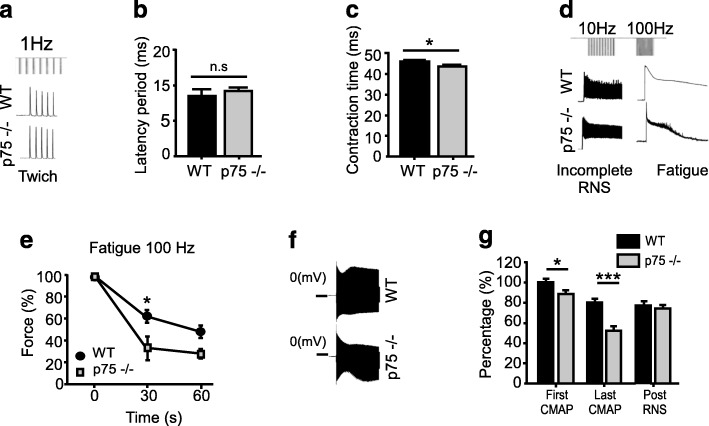Fig. 2.
The p75NTR−/− mice display NMJ transmission alterations and accelerated nerve-dependent muscle fatigue. Time course of the mean force measurements (as a percentage of maximal force) for hind limb muscles after sciatic nerve stimulation of 2–4 months old WT and p75NTR−/− mice. First, the phases of contractile response elicited by 1 Hz sciatic nerve stimulation were measured. a Representative traces of 1 Hz stimulation protocol. No changes were observed in the latency period (b) of single-twitch stimulations, whereas a slight but significant decrease was observed in the contraction time (c) in p75NTR−/− muscles compared to WT controls. Second, force decline was determined after incomplete (10 Hz) and complete (100 Hz) tetanus. d Representative traces of 10 and 100 Hz stimulation protocols. A significant acceleration of muscle fatigue was observed at 30s of 100 Hz stimulation in p75NTR−/− compared to WT mice (e). f Representative traces of electromyographic recording after repetitive nerve stimulation. g Quantification of CMAP shows that p75NTR−/− mice display decreased impaired neuromuscular activity after the first and after repetitive presynaptic stimulation (RNS). The results represent the mean ± SEM of n = 3–4 (WT), n = 4–7 (p75NTR−/−) in (a–e) and n = 7 (WT), n = 8 (p75NTR−/−) in (f–g). n.s., non-significant, *p < 0.5, ***p < 0.001, unpaired t-test (b–c, g), or two-way ANOVA (e)

